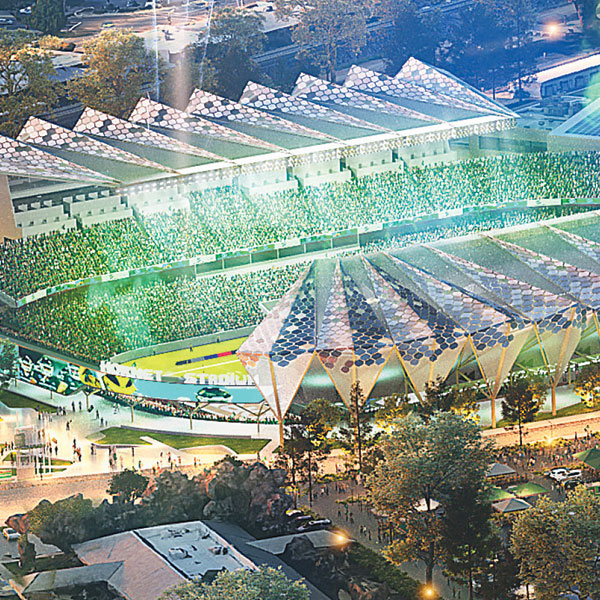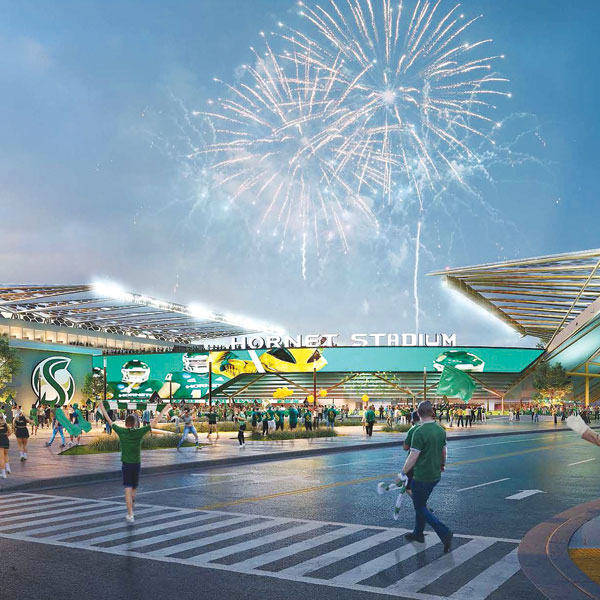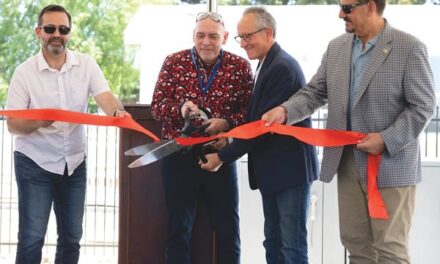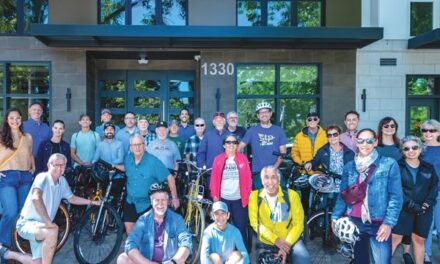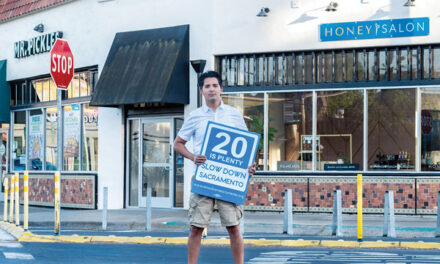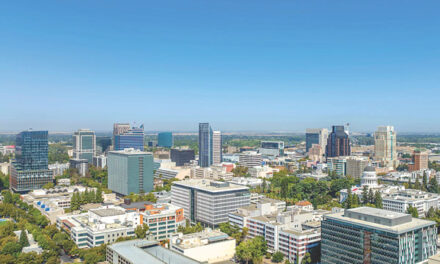One of the most inspired quotes about cities comes from planner and architect Daniel Burnham, whose vision for the Chicago lakefront sparked an aesthetic renaissance still paying dividends generations after his death in 1912.
“Make no little plans,” Burnham said. “They have no magic to stir men’s blood and probably will not themselves be realized. Make big plans, aim high in hope and work, remembering that a noble, logical diagram once recorded will never die, but long after we are gone will be a living thing, asserting itself with ever growing insistency.”
That seems to be the mindset at Sacramento State, where President Luke Wood and Athletic Director Mark Orr have ambitious but vague plans for a new multi-purpose stadium to propel the school into a major athletic conference, such as the Mountain West or Pac-12.
“The stadium is a commitment to our belief that Sacramento has a spirit and passion to turn this city into a college football town,” Wood says. “It will be a stadium worthy of Sacramento State’s academic and athletic prowess, and it will also honor our position as one of the top media markets in the country. We are excited about what the future will bring and can’t wait to open our new stadium.”
Given Sac State’s resurgence in football the past few seasons and local enthusiasm for sports, a new stadium with at least 25,000 seats sounds nice. It could accommodate college rugby and soccer, the Republic pro soccer team, plus concerts and more.
But from the breathless media coverage, you would think the stadium is a done deal.
“A move to big-time college sports would mean Sacramento State has finally arrived,” read a headline in the Bee.
On KHTK radio’s “Stiles and Watkins” sports talk show, the coverage gushed. Although co-host Allen Stiles raised questions about funding, he concluded: “The bottom line is they’re not coming out saying something like this if it’s not etched in stone.”
Should we save a date for the Notre Dame game?
Not quite. When Sac State announced its plans and released renderings from Populous, a global designer of concert venues, arenas and stadiums, several questions went unanswered. Such as
:
How much will it cost?
What’s the financing plan?
If funding comes from student fees or university bonds, do students, faculty and Cal State trustees need to sign off?
Will a major conference accept Sac State before the stadium is built?
Can you tear down the existing stadium, build a new one on the same site and be ready for the 2028 season?
Officials say Sac State will continue to play at old Hornet Stadium. They didn’t explain how football will work around demolition and construction.
And on and on. Stadiums are complicated. They require approvals. They take time to fund, plan and build. They demand real market due diligence.
For perspective, I turned to Joe Davidson, a stalwart of Sacramento sports journalism. For more than three decades at the Bee, Davidson has written about local sports with enthusiasm while never losing sight of reality.
“I’ve seen moments of optimism before,” Davidson tells me. “We could certainly all appreciate the ambition and excitement of potentials, but there’s a reality blast here of how much is the new stadium going to cost, who’s paying for it, how much has been raised, how much more has to be raised?
“Because Sac State athletics can’t be taken seriously for conference realignment or promotion until there are facilities in place. Not a framework of paperwork that there will be a new stadium, but an actual stadium. And I think the Pac-12 and Mountain West will continue to look elsewhere until that happens.”
Like Davidson, I would like a new stadium at Sac State. College football generates revenue and civic pride. But it’s hard to get too jazzed until we have detailed answers.
“I hope it all works,” Davidson says. “It would be a lot of fun. I think it would be great for the city, but the big reality is: how soon can these facilities get built, and where is the money?”
Gary Delsohn can be reached at gdelsohn@gmail.com. Follow us on Facebook and Instagram: @insidesacramento.



